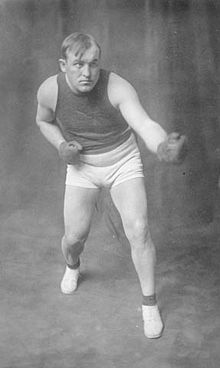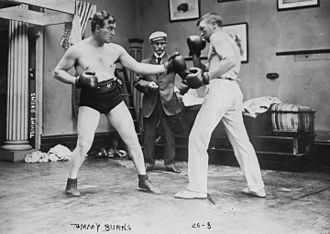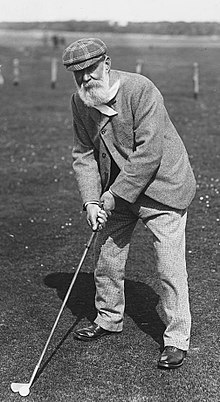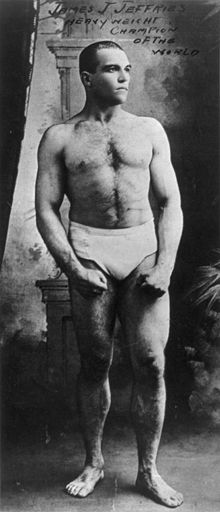On the 17 June, 1881, the only Canadian-born World Heavyweight Boxing Champion, Tommy Burns, was born in Normanby Township near Hanover, Ontarion.
Born in Hanover, Ontario, into an impoverished Italian – Canadian family, Noah Brusso was the twelfth of thirteen children, five of which died before reaching adulthood.
Brusso began his prizefighting career under his real name in Detroit, Michigan, in 1900, and took the Scottish-sounding name of Tommy Burns in 1904.

Tommy Burns met Marvin Hart for the heavyweight championship of the world in Los Angeles in February 1906, as the 2-1 underdog, but won the bout with a 20-round decision.

Nicknamed ‘The Louisville Plumber’, Hart came to prominence in 1905 after a win over the future champion Jack Johnson. Since the heavyweight title was vacant at the time, following the retirement of the champion James J. Jeffries, Hart’s record earned him a shot at the title, against the top-ranked Jack Root [1876–1963], who had previously beaten Hart in 1902. With James J. Jeffries acting as referee for the fight held in Reno, Nevada, ‘The Louisville Plumber’ KO’d Root in round 12 round, to temporarily clinch the vacant title.
Burns went on to travel the globe, famously challenging all comers as Heavyweight Champion, which led to the celebrated bout with Jack Johnson, which cost Burns his title in the fight held in Sydney, in December 1908. The fight lasted fourteen rounds before being stopped by the police, and the referee awarded the decision and the title to Johnson.
Tommy defended his title 11 times within a period of 3 years, once twice in one night.

During the Great War Tommy joined the Canadian army, serving as a physical fitness instructor of troops in Canada.
After his retirement, Burns promoted some boxing shows, and in 1928 moved to New York City where he ran a speakeasy. Burns also worked as an insurance salesman and security guard. And in 1948 he was ordained as a minister, and at the time of his death, was an evangelist living in California.
He died in May 1955, after suffering a heart attack at the age 73, while visiting a church friend in Vancouver. He was interred in an unmarked pauper’s grave, and four people attended his burial, at Ocean View Cemetery in Burnaby, British Columbia.
Burns is one of the most over-looked heavyweight champions, yet he was the first truly international heavyweight champion, defending his title in America, England, Ireland, France and Australia. Standing at 5’7″, the ‘Little Giant of Hanover’ was the shortest heavyweight champion in history,
In 1961 a Vancouver sports writer raised funds to commission a memorial plaque for Burns’ grave.
17 June, 2019















